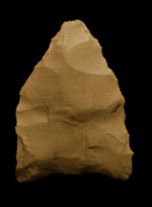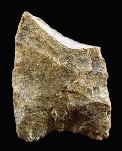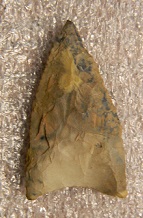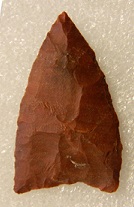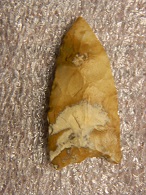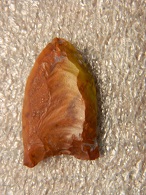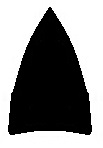
Identified By: Joseph McAvoy and Lynn McAvoy
Named For: Type Site
Date Identified: 1997
Type Site: Cactus Hill (44Sx202)Sussex County, Virginia
McAvoy is a professional archaeologist who is known for the Nottoway River Survey and his excavations at Cactus Hill, Virginia. This type was named in a professional publication and has many professional references, but there is controversy regarding the validity of this type. Examinations into this type are still underway and this type is considered a provisional type at this time.
Cluster:
There are many that question the validity of the points found at Cactus Hill in layers below Clovis points. In order to be considered a "Pre-Clovis" site, three elements that must be demonstrated 1) evidence of human agency, 2) secure geochronology, and 3) undisturbed stratigraphic context (Perron, 1999). The span of human activity at the Cactus Hill site satisfies the fist criteria. Radio carbon dating from levels below Clovis levels returned dates of 10,500 to 16,500 B.P. satisfying the second criteria.
The problem lays in the last criteria. The Cactus Hill site is located on a sand dune which is susceptible to post-dispositional disturbance. The top levels of the site show no signs of stratification. Lower levels consist of reddish brown layers which could be argued as stratification. This has been studied by James Feathers from the University of Washington who found that the levels have not been disturbed and that the occupation levels have not been mixed. These results have been confirmed by Lucinda McWeeney from Yale University and Carol Mandryk from Harvard University. However, there has been found evidence that there has been limited distribution of the strata which may be caused by small rodents burrowing through the different layers of strata. Others have argued that the apparent stratification of the site are a result to the characteristics of the dune and not occupation of the site.
To further complicate this discussion, Dennis Stanford has advocated the Solutrean hypothesis which suggest that the Cactus Hill point represent a midpoint between the French Solutrean and the Clovis types. With only one site producing these types of points and limited number of examples, evidence is lacking this hypothesis.
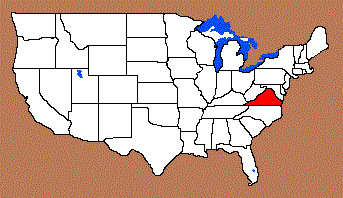
These points are associated with the Cactus Hill site of eastern Virginia.
Date: 20,000 - 18,000 B.P.
Cultural Period: Pre-Paleo
Glacial Period: Middle Pleistocene
Culture:
It has been suggested that the Miller Lanceolate and the Hardaway Blade represent the same type as the Cactus Hill points.
Clovis, Ely's Ford, Hardaway Blade, Miller Lanceolate

